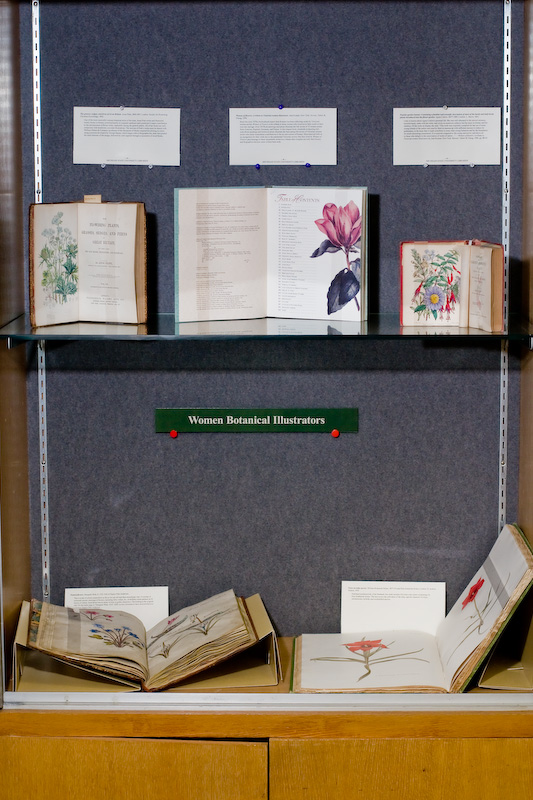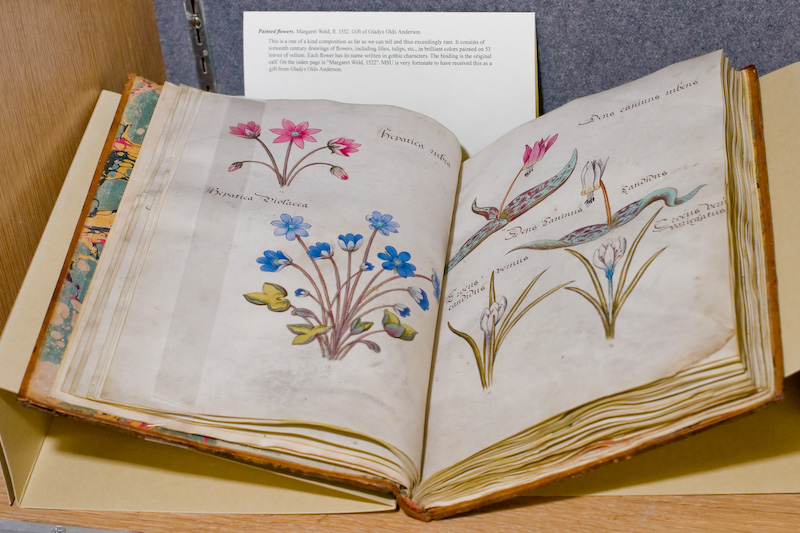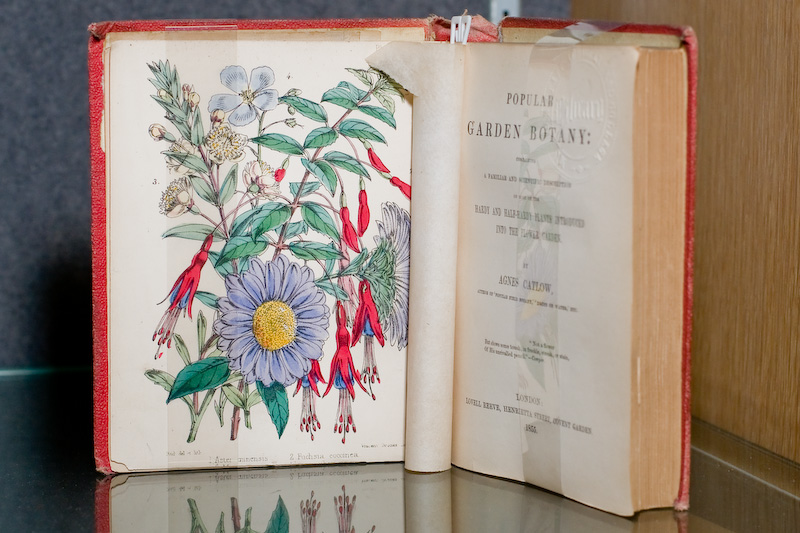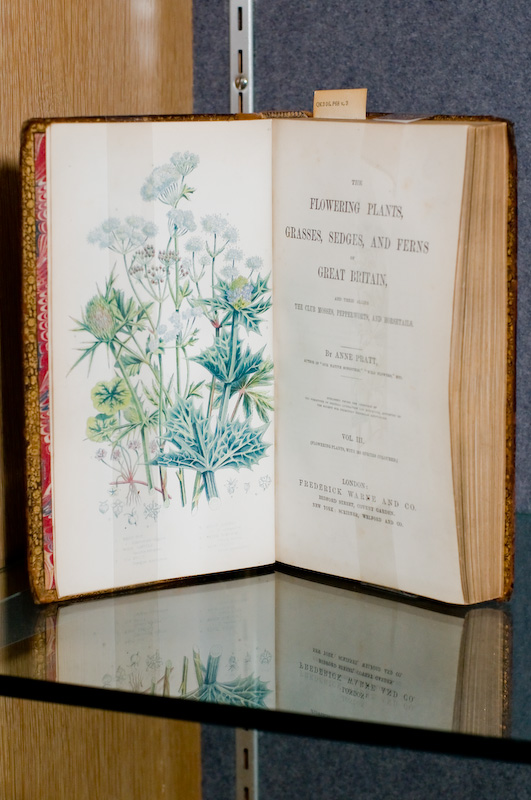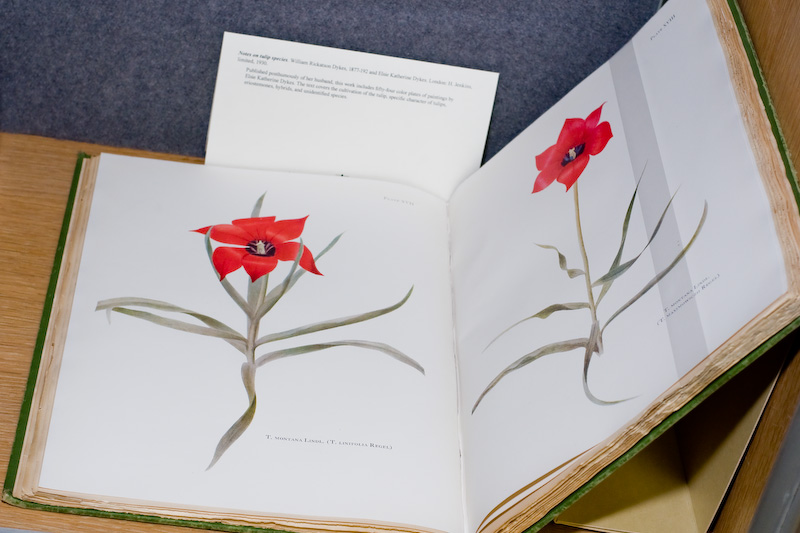Women Illustrators
- Painted flowers. Margaret Weld, fl. 1722. Gift of Gladys Olds Anderson
- This is a one of a kind composition as far as we can tell and thus exceedingly rare. It consists of sixteenth century drawings of flowers, including lilies, tulips, etc., in brilliant colors painted on 53 leaves of vellum. Each flower has its name written in gothic characters. The binding is the original calf. On the index page is “Margaret Weld, 1722”. MSU is very fortunate to have received this as a gift from Gladys Olds Anderson.
- Women of flowers: A tribute to Victorian women illustrators. Jack Kramer. New York: Stewart, Tabori & Chang, 1996.
- Since the early 1970s, horticultural expert Jack Kramer has been collecting works by Victorian women artists. Women of Flowers is his tribute to those women who received so little credit in their own day and age. Over 150 floral paintings and prints illustrate the life stories of 35 women artists from America, England, Germany, and France. In this elegant book, hundreds of dazzling full-color floral paintings and botanical prints illustrate the fascinating life stories of Victorian women artists who made tremendous contributions to the art and science of botany. Most received little or no recognition for their work due to the patriarchal Victorian society that they lived in. Women of Flowers pays homage to these remarkable artists in a volume that compiles not only their history and biographies but also some of their best work.
- Popular garden botany: Containing a familiar and scientific description of most of the hardy and half-hardy plants introduced into the flower garden. Agnes Catlow, 1807?-1889. London: L. Reeve, 1855.
- Little is known about Agnes Catlow’s personal life. She was well educated in the natural sciences, traveled much, some with her sister, and wrote on numerous subjects but the most on botany and for children. Of the work on display she said, “This work was originally compiled for the use of some young friends of the author and used by them in manuscript with sufficient success to induce its publication, in the hope that it might contribute to some other young botanists and by the foundation for much interesting amusement. It is a pursuit congenial to the young and active; and above all to those who delight in the examination of works of nature…”.
- Source
Women of flowers: A tribute to Victorian women illustrators by Jack Kramer. New York: Stewart, Tabori & Chang, 1996. pp. 88-92.
- The grasses, sedges, and ferns of Great Britain. Anne Pratt, 1806-1893. London: Society for Promoting Christian Knowledge, 1866.
- One of the most successful woman botanical artist of her time, Anne Pratt wrote and illustrated twenty books on botany aimed primarily at a popular audience and constituted a major contribution to the advancement of flower study, especially among the general public. All of her books are well composed, with handsome, accurate illustrations. The success of Pratt's works must be shared with William Dickes & Company, producers of the thousands of blocks required for printing in colors using a process developed by George Baxter, which began with a lithographic key plate that printed the main features of the design, followed by color applied through a succession of wood blocks.
- Notes on tulip species. William Rickatson Dykes, 1877-192 and Elsie Katherine Dykes. London: H. Jenkins, limited, 1930.
- Published posthumously of her husband, this work includes fifty-four color plates of paintings by Elsie Katherine Dykes. The text covers the cultivation of the tulip, specific character of tulips, eriostemones, hybrids, and unidentified species.


